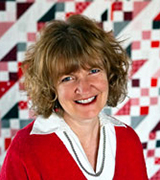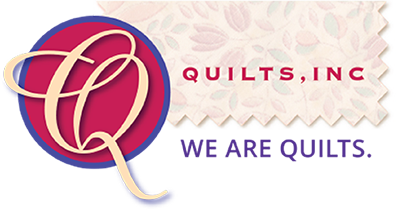Alabama joined the United States of America on December 14, 1819. As the only state in the union to ever have designated a quilt (the Pine Burr) as an official state symbol, it was a foregone conclusion that quilts would play a role in celebrating Alabama’s 200th birthday. To mark the occasion, the Alabama Folklife Association invited master quiltmakers to create five original quilts commemorating the bicentennial.
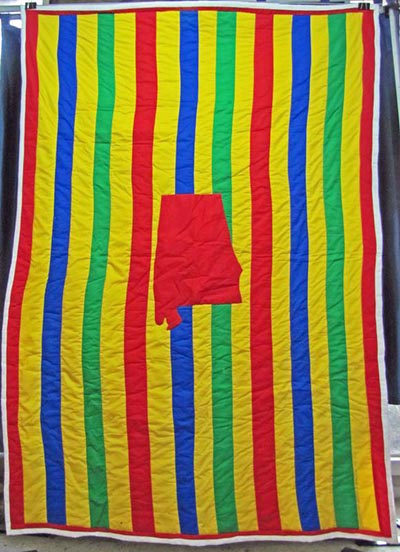
Photo courtesy of the Alabama Folklife Association.
Back in 1997 when the Alabama Legislature designated the Pine Burr as the state’s official quilt, it was Loretta Pettway Bennett who made the representative pattern. She did so while participating in the folklife apprenticeship program sponsored by the Alabama State Council on the Arts, and donated her quilt to the Alabama Department of Archives and History in 2005. Loretta’s mother, Qunnie Pettway (1943-2010), a quilter from the now-famous Gee’s Bend group, had taught her how to make the Pine Burr.
It seems especially fitting that Loretta Pettway Bennett was among the quilters chosen to make one of the bicentennial quilts. She was born on a farm in Gee’s Bend and grew up in the family quilting tradition. She married her high school sweetheart and the couple spent two decades moving around the world with the military before returning to Gee’s Bend.
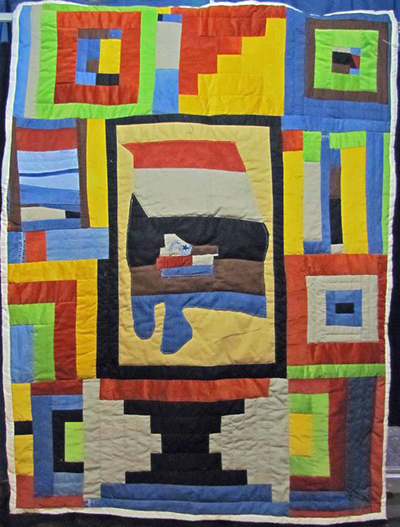
Loretta and her sister-in-law, Marlene Bennett Jones, created an original design for the bicentennial quilt she made, titled Past & Present, featuring a map of the state of Alabama and geographical features around Gee’s Bend. She says that she included “blocks using past techniques, like the House Top, the Bricklayer or Courthouse Steps, Sweep, and Pig in a Pen.” The present is represented by the fact that it was made and quilted by descendants of Gee’s Bend quilters.
Several more of the bicentennial quilters share the surname Pettway, but that doesn’t necessarily mean that they are all blood relations. “Pettway was the name of the main plantation owner in the Gee’s Bend area,” explains Emily Blejwas, Director of the Alabama Folklife Association. “After the slaves were freed, many of the people from his plantation kept the same name.” Loretta Pettway Bennett adds, “Because so many people in Gee’s Bend have the name of Pettway, people get middle names that let others know who their fathers are, so nobody marries a close cousin by mistake.”
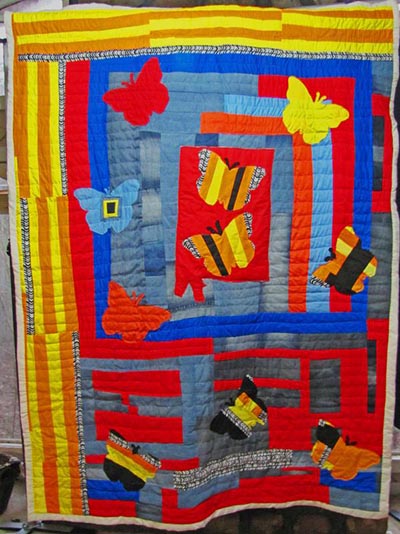
Gee’s Bend Monarch was made by Claudia Pettway Charley, with help from her mother, Tinnie Pettway, and her aunt, Minnie Pettway. Inspired by the Monarch butterfly, which is the state insect of Alabama, Claudia says, “Just like the women of Gee’s Bend, both the Monarch butterfly and the Gee’s Bend quilters are well known and celebrated. The Monarch butterfly is a symbol of resurrection, endurance, hope, and life. They also represent rebirth, transformation, and new opportunities. This is definitely something that we, the women of Gee’s Bend, can relate to. Outside of God, we only had each other, a close-knit community of farmers and quilters. During the cold winter months, the quilts were there to help keep us warm, just like the Monarch butterflies that would come together and make a cluster to keep warm at night. Sometimes, the Monarch butterfly would travel up to a hundred miles a day. Gee’s Benders were isolated in a bend of the Alabama River. Once they took the ferry away, we would have to travel miles, with only one way in and one way out to do most of our business, like shopping for food, clothes, etc. Times were challenging, but we survived. With that said, the Gee’s Benders and the Monarch butterfly seem to have more in common than one would imagine.”
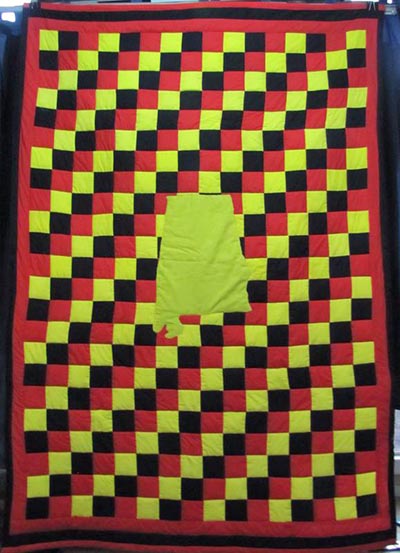
Mary Margaret Pettway co-created two of the bicentennial quilts with Doris Pettway Mosely: Grandmother’s Choice and Lazy Gal Quilt. Mary Margaret is an Alabama Humanities Foundation fellow and an instructor at the Black Belt Treasures Cultural Arts Center, and also serves as board chair of the Souls Grown Deep Foundation, a nonprofit dedicated to preserving and promoting African American artists in the South. Born, raised, and still living in Gee’s Bend, she is a fourth-generation quilter who started quilting when she was five-years old.
Doris Pettway Mosely, daughter of one of Gee’s Bend’s most famous quilters, Leola Pettway, co-created Grandmother’s Choice and Lazy Gal Quilt with Mary Margaret Pettway. Doris didn’t start quilting on her own until 2008, although she did quilt some with her mother. Both Grandmother’s Choice and Lazy Gal Quilt honor quilt making techniques of Gee’s Bend.
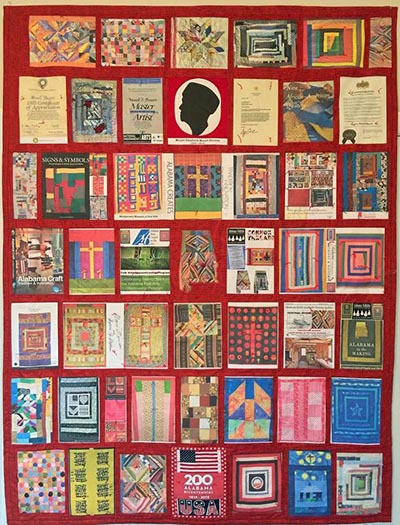
The fifth bicentennial quilt is not associated with Gee’s Bend. Rather, the Mozell S. Benson Legacy Quilt was made to honor internationally renowned Alabama quilter Mozell Stephens Benson. It was made by her daughter, Sylvia G. Stephens, who describes it as a “‘quilt of quilts’ designed to document some of the significant quilting events in the life of Mozell Stephens Benson and to connect five generations of quiltmakers in the Stephens family lineage. The quilt consists of 52 total quilt blocks, most of them made by Benson and her descendants. Many blocks are digital images of quilts that belong to family members, collectors, and museums.”
Mozell Benson, who died in 2012, was a recipient of a National Endowment for the Arts National Heritage Fellowship. Her quilts were shown in a number of museums, including the Smithsonian Institution in Washington, D.C., and the American Folk Art Museum in New York City. She received a National Heritage Fellowship from the National Endowment for the Arts in 2001. Her quilts appeared in three traveling exhibitions curated by quilt scholar Maude Wahlman. In 1985, the U.S. State Department sent Mozell Benson to four African countries as a featured quilter in one of those exhibitions.
By commissioning these quilts, the Alabama Folklife Association has assured that the state’s rich heritage of quiltmaking will be recognized not only as part of the bicentennial commemoration, but also as a vital and enduring Alabama tradition.

